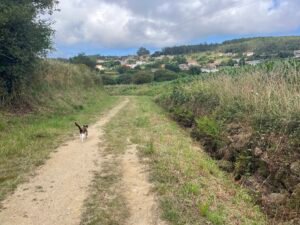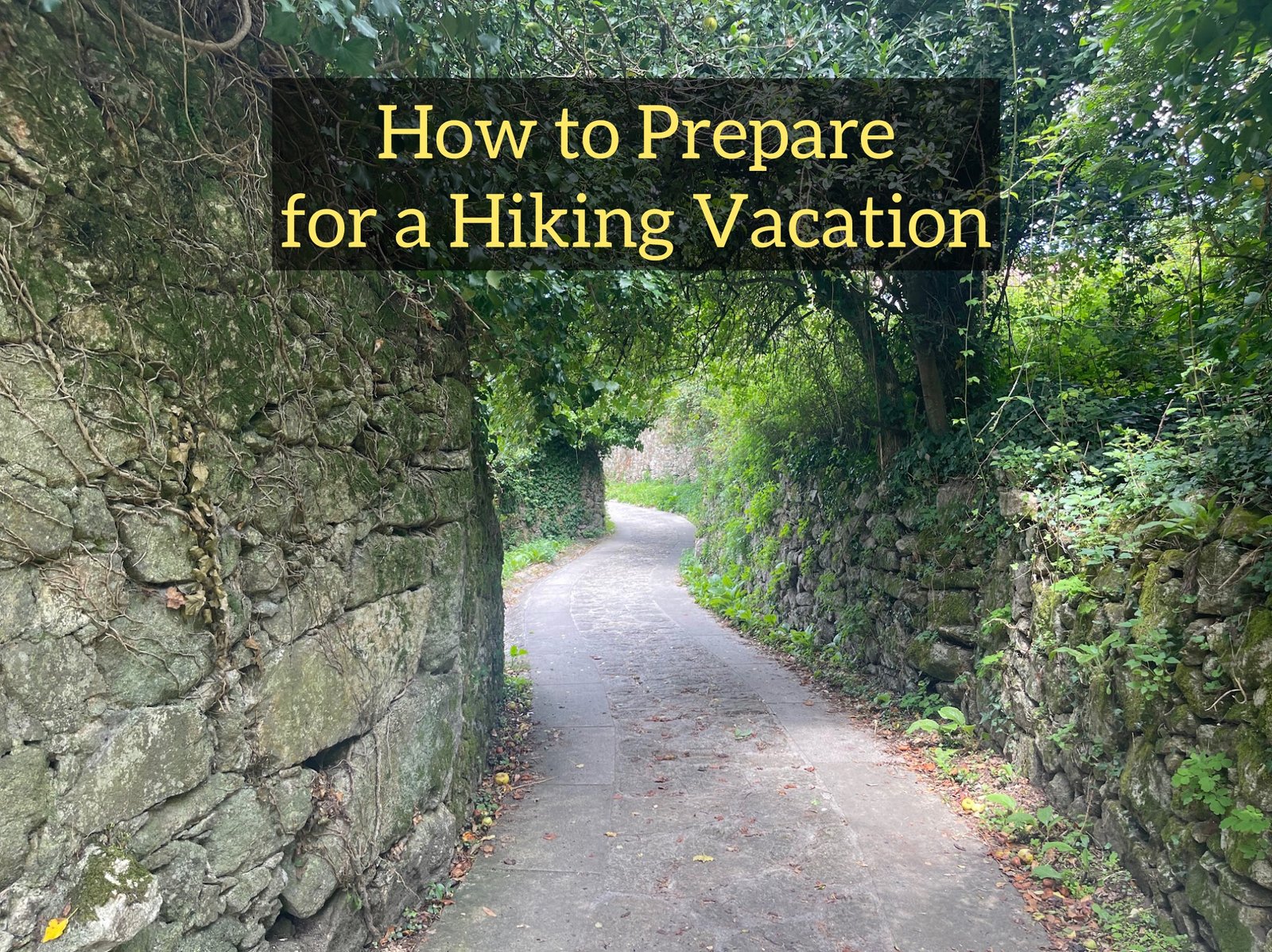When we think about vacations, we often imagine relaxation, sightseeing, and indulgence. However, when planning a hiking vacation, it’s essential to shift that mindset to one of preparation and training. Just as we wouldn’t head to an amusement park without some knowledge of the attractions, we shouldn’t embark on a hiking adventure without getting our bodies and minds ready for the journey ahead.
It’s amusing that no one “trains” for a vacation, even when they are headed to places like Disney World, where they’ll walk 6 to 10 miles a day, or Rome, Italy, where they may walk even further in a single day. We just don’t consider training for a traditional vacation. You know, because it’s a vacation; the place you go to relax and unwind.
But if we are planning a hiking vacation, we need to train. We must consider the gear we carry, what clothing to wear, and how to manage ourselves if a problem arises. When hiking, you might find yourself in the middle of nowhere. Do you have a plan? Do you have basic first aid knowledge? There are many considerations. I’m not addressing all of that today (maybe another day). Today, I’m focusing on training to be physically and emotionally prepared.

Understand the Terrain
First, get to know the trails you plan to hike. Research the elevation, terrain type, and estimated distance. Understanding what to expect will help you customize your training regimen. For example, hiking in the Rocky Mountains requires different training than trekking through the Appalachian foothills. A hiking trail like the Camino de Santiago is entirely different. On most routes of the Camino, there are villages every 3-4 miles, which provide a break, a snack, and a distraction that you won’t find on other trails.
“I love hiking, but I don’t love every minute of every hike.”
Building Physical Endurance
Any long-distance trek will challenge your physical abilities, and that shouldn’t scare you; it should excite you to push your limits. We often say, “I love hiking, but I don’t love every minute of every hike.” So why do we still love it even when we don’t enjoy every moment? Because during tough challenges on difficult days, things can be overwhelming; however, when you overcome something you once thought was impossible, the sense of achievement is incredibly rewarding.
- Start Walking. The best way to prepare for hiking is to start walking regularly. If you’re not already doing so, aim for at least 30 minutes of walking three to five times a week. Gradually increase the duration and intensity of your walks, aiming for longer distances over time. Set a manageable plan, one that feels attainable for you. This is not about being the fastest or best walker; it’s about improving what you can do today.
- Incorporate Hills. Explore local trails or spots with inclines. Walking uphill helps develop the leg strength and endurance necessary for hiking. Take your time on the hills; this isn’t a race. You’re only competing against yourself. If you don’t have hills where you live, then walk on a treadmill and slowly increase the incline.
- Cross-training. To boost overall fitness, consider exploring other forms of exercise. Activities such as cycling, swimming, or even strength training can improve your cardiovascular endurance and muscle strength, which are essential for navigating rugged trails. Yoga is excellent for enhancing flexibility, which your muscles will appreciate when they feel tired and tight after a long day of walking. We have a local yoga studio that offers a punch card for drop-ins, so you don’t need a membership.
- Practice with Gear. Don’t forget to train with the actual gear you plan to take on your trip. Get used to wearing your hiking boots or shoes, carrying your backpack, and using trekking poles. This way, you’ll break in your equipment and evaluate what adjustments might be necessary. Continue adding weight to your pack as you become comfortable, simulating the gear you’ll carry on your trip. Start with an empty pack, then add water, followed by a bit of clothing, and so on, until you have exactly what you will take on your trip. One thing we do to practice with our gear is add bags of rice to mimic gear and weight.

Mental Preparation
Hiking is not only a physical challenge but also a mental one. Some days, the trail can feel short and beautifully enjoyable, while other days may feel long and even tedious. To prepare yourself, set realistic expectations and establish mental goals for your hikes.
- Set Your Intention. Before I start walking, I like to set a daily intention: What do I want to think about today? What do I want to be thankful for today? What do I want to discuss with my partner or my higher power today? This intention helps me focus my mind when the day is long and gives my walk a greater purpose.
- Balance Your Mind. Include mindfulness or meditative practices in your training routine. Recognizing that hiking can sometimes be tough will help you stay calm and focused during challenging sections of the trail. While you’re on the trail, you’ll have plenty of time to lose yourself in your thoughts. Is that beneficial for you? Do you prefer music? Be ready for long periods of silence.
- Visualize Success. Spend time visualizing yourself completing your hike. Picture the stunning views, the sense of accomplishment at reaching the summit or the destination, and how to manage any physical challenges you might face. This practice can be a powerful motivator.
- Learn Basic Navigation and Safety. Familiarize yourself with map reading and compass skills, or consider taking a wilderness first aid course. Being mentally prepared for emergencies boosts confidence and can make your hiking experience safer and more enjoyable.

Preparing for a hiking vacation is an investment in the great outdoors. It’s an investment in you—the health of your mind and body. By training both physically and mentally before you go, you’ll not only enhance your hiking experience but also ensure that you’re ready for any challenges that arise with confidence and resilience. Remember, it’s about enjoying the journey just as much as the destination. So lace up those hiking shoes, hit the trail right now, and let your adventure begin!
Have a question? Reach out to us! Make sure you subscribe to our newsletter so you know when new blog posts are published!
Do you like what you read today? Please give us a thumbs up, leave a comment, and share it with others!


0 Comments